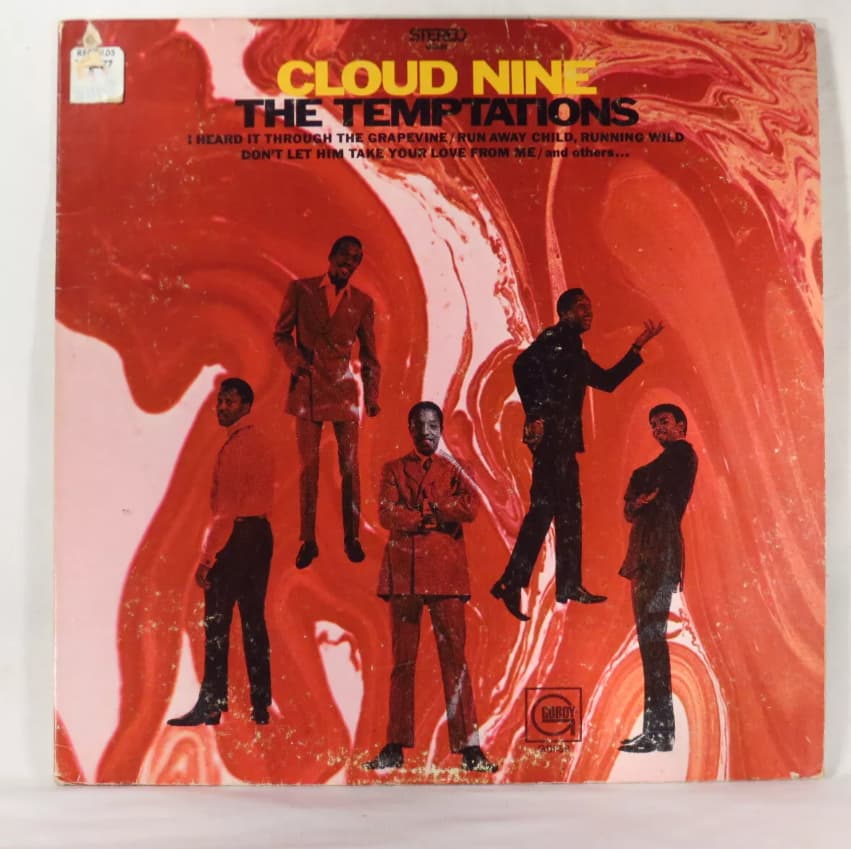
The Temptations and Their Game-Changing Hit: “Cloud Nine”
When you think of The Temptations, certain songs might immediately come to mind, but one track that truly changed the course of their career and the Motown sound is “Cloud Nine”. Released in 1968, this single was more than just another hit; it was a bold departure from the group’s traditional style and a foray into the innovative world of psychedelic soul. The result? Motown’s first-ever Grammy Award, a landmark achievement that signified both artistic and commercial success.
“Cloud Nine” marked the beginning of a new era for The Temptations. By 1968, the band was facing internal changes, with Dennis Edwards stepping in to replace the legendary David Ruffin. This shift coincided with producer Norman Whitfield’s growing fascination with the emerging sounds of the time, particularly the influence of Sly & the Family Stone. The result was a sound that was edgier, more experimental, and completely unlike anything the group had previously recorded.
The introduction of psychedelic soul into the mainstream was not without its challenges. At first, Whitfield was reluctant to dive into this new sound, dismissing it as a passing trend. But it wasn’t long before he changed his tune, crafting the groundbreaking backing track for “Cloud Nine”. This track was a significant shift from the smooth, string-laden arrangements that characterized Motown’s earlier hits. Instead, it featured wah-wah guitars, a hard-driving beat, and the unmistakable conga drums of Mongo Santamaria.
Vocally, “Cloud Nine” showcased the versatility and unity of The Temptations, with all five members trading lead vocals in a manner reminiscent of The Family Stone. The interplay between Edwards, Eddie Kendricks, Paul Williams, Otis Williams, and Melvin Franklin created a dynamic and engaging performance that perfectly complemented the song’s themes.
Lyrically, “Cloud Nine” was a stark contrast to the love songs and romantic ballads that The Temptations were known for. Instead of focusing on relationships, the song delved into the struggles of life in poverty, with the protagonist seeking escape from his troubles by “riding high on cloud nine.” While some listeners, including Motown head Berry Gordy, interpreted the lyrics as a reference to drug use, the band and songwriters have consistently denied this, insisting that the song is about finding a mental escape from the harsh realities of life.
Critics and fans alike recognized the song’s revolutionary impact. Cash Box described it as “near revolutionary,” while Record World predicted that “the kids will be on cloud nine when they hear it.” The song’s success was undeniable, reaching #2 on the U.S. R&B chart and #6 on the U.S. Pop chart. But more than just a chart-topping hit, “Cloud Nine” paved the way for a series of socially conscious, psychedelic-themed records from The Temptations, including “Runaway Child, Running Wild,” “Psychedelic Shack,” and “Ball of Confusion (That’s What the World Is Today).”
“Cloud Nine” was a bold statement, not just musically but culturally, reflecting the changing times and the growing desire for music that spoke to the social issues of the day. In doing so, it solidified The Temptations’ place in history, not just as Motown legends, but as trailblazers who were unafraid to push the boundaries of their sound.